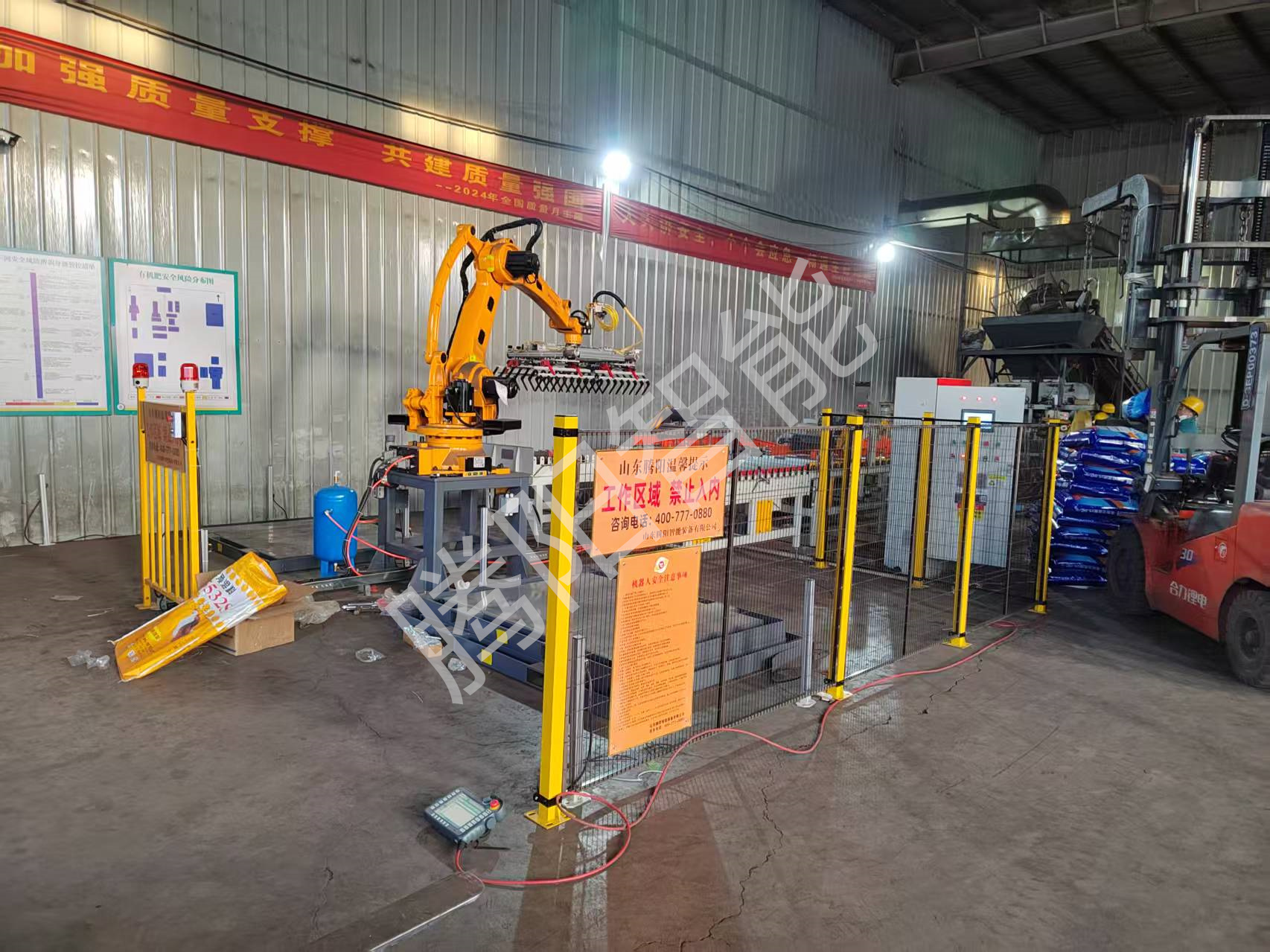What production scenarios are palletizing robots suitable for?
Release time:
2025-04-14
With the rapid development of industrial automation technology, palletizing robots have become an indispensable intelligent device in modern production scenarios due to their high efficiency, precision and flexibility.
 With the rapid development of industrial automation technology, palletizing robots have become an indispensable intelligent device in modern production scenarios due to their high efficiency, precision and flexibility. The following analyzes its typical application scenarios from multiple industry perspectives:
With the rapid development of industrial automation technology, palletizing robots have become an indispensable intelligent device in modern production scenarios due to their high efficiency, precision and flexibility. The following analyzes its typical application scenarios from multiple industry perspectives:
1. Manufacturing and back-end of production lines
In the manufacturing industry, palletizing robots are widely used in automotive parts, home appliances, metal processing and other fields, responsible for completing the automated stacking and handling of boxed, bagged or canned products. For example, in food processing plants, robots can quickly handle the packing and palletizing of products such as biscuits, candies, and canned goods, significantly improving efficiency and reducing the risk of contamination caused by manual contact. In addition, the handling of heavy objects such as cement bags and bricks in the building materials industry also relies on palletizing robots, whose high load capacity can replace high-intensity manual labor.
2. Chemical and hazardous materials handling
The chemical industry often involves corrosive, flammable and explosive materials, and the risk of manual operation is extremely high. Palletizing robots can complete the stacking of barreled chemicals or bagged fertilizers in a safe environment through closed or explosion-proof design, avoiding safety accidents and improving operation stability. For example, bag-type palletizing robots are designed for chemical raw materials, and use flexible robotic arms to efficiently connect packaging and transportation.
3. Food and pharmaceutical industries
For the food and pharmaceutical industries with strict hygiene requirements, palletizing robots can reduce the risk of contamination by reducing manual intervention. For example, box-type palletizing robots can accurately organize medicine boxes or food packaging boxes to ensure that they are neatly stacked and meet hygiene standards. Robots can also adapt to the needs of multi-variety and small-batch production through visual recognition technology to improve flexibility.
Palletizing robots have penetrated into core areas such as manufacturing, chemicals, logistics, food and medicine through their advantages of efficiency, safety and flexibility, and continue to evolve towards intelligence and multi-scenario collaboration. Enterprises can significantly improve production efficiency and reduce overall costs through reasonable layout and equipment selection, injecting new impetus into industrial upgrading.
Latest News
Unpacking and Feeding Robots: Ushering in a New Era of Unmanned Raw Material Handling!
In modern factories, raw material unpacking and feeding are experiencing revolutionary breakthroughs! By fully automating the entire process, unpacking and feeding robots completely eliminate the pain points of manual operations, such as low efficiency, excessive dust, and high labor intensity.
2025-10-27
Column Palletizer: Efficient Palletizing Expert in Compact Spaces
How can you achieve efficient palletizing in space-constrained factory environments? Column palletizers, with their unique structural design and superior performance, are the ideal solution for palletizing in tight spaces!
2025-10-20
The era of manual palletizing is over!
On modern production lines, manual palletizing is gradually becoming a thing of the past. Faced with increasing productivity and cost pressures, traditional manual palletizing can no longer meet the needs of business development. The emergence of palletizing robots has completely changed this situation!
2025-10-13
Palletizers: Improving Efficiency Starts Here
In the increasingly competitive manufacturing and logistics sectors, continuously improving efficiency and reducing costs have become core concerns for companies. Palletizing, as a critical step in the production process, directly impacts overall operational effectiveness. The introduction of palletizers is a crucial starting point for companies to achieve breakthroughs in efficiency.
2025-09-29
Small Carton Collaborative Palletizing Station: A Flexible, Efficient, Intelligent Upgrade Option!
For small-batch, high-variety carton palletizing, traditional large-scale palletizing systems are often cumbersome and uneconomical. However, the Small Carton Collaborative Palletizing Station, with its flexibility, safety, and efficiency, is becoming an ideal solution for small and medium-sized businesses!
2025-09-22
Palletizing Robots Improve Efficiency in Feed and Pet Food Projects
In the feed and pet food industry, expanding production scale and intensifying market competition have made efficiency improvements crucial. Palletizing, the final process before shipment, is traditionally performed manually, characterized by low efficiency, high costs, and high labor intensity, becoming a production bottleneck. The application of palletizing robots is bringing a new solution to the industry!
2025-09-15




